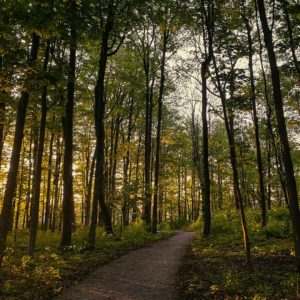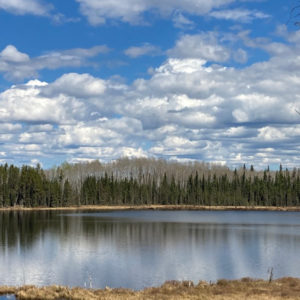Indigenous Leadership Critical To Successful Forest Restoration And A Green Recovery
In 2012, the United Nations General Assembly proclaimed March 21 as the International Day of Forests to celebrate and raise awareness on the importance of forests across the world. The theme for 2021 is “Forest restoration: a path to recovery and well-being”. It reflects a growing realization that forest loss and degradation are damaging to the health of all living things.
The Importance of Forest Restoration in Canada
Forest restoration helps regain ecological integrity and enhances human well-being in deforested or degraded landscapes¹. Restoring forests is an urgent policy priority. It provides a nature-centered solution to address global concerns such as climate change, natural disasters, food, and water insecurity.
From the Atlantic to the Pacific, from the southern tip of Ontario to the Mackenzie River valley, forests cover about 38 percent of Canada’s territory². Canada also contains approximately 30 percent of the world’s boreal forests and 9 percent of global forests, making the health of Canadian forest landscapes critical to the health of the planet as a whole.
Forests provide a wide range of benefits to all peoples in Canada, including water purification, food, wildlife habitat, cooling, and nutrient cycling, among others. Canada’s forests also play an important role in the global carbon cycle by absorbing, storing, and increasingly releasing large amounts of carbon from and into the atmosphere.
The Dangers of Forest Conversion
Since colonial settlement, forests in Canada have been under relentless pressure from urban settlements, agriculture, commercial logging, and other forms of industrial development and extraction. It is estimated that between 1975 and 2019, about 3.3 million hectares of Canadian forests were converted to non-forest uses³.
Forest conversion leads to the emission of greenhouse gases, accelerates the loss of biodiversity, and threatens many Indigenous Peoples’ cultures and relationships to the land, undermining efforts to pursue reconciliation and develop respectful relationships with Indigenous communities. This is deeply concerning not only for Canadians but the world at large.
Although we have lost parts of the rich and biodiverse Canadian forests that once blanketed the country, in the last few decades we have also learned a great deal about how to restore them. Successful forest restoration hinges on:
- Recognizing the significant role Indigenous Peoples’ can play in addressing the twin crisis of biodiversity loss and climate change;
- Massively expanding protection for age-old undisturbed forests, and;
- Strategically pursuing reforestation by planting the right trees in the right places for the right reasons.
Prioritizing Indigenous Knowledge and Leadership
Supporting and scaling up Indigenous approaches to forest stewardship and restoration should be a central priority.
Indigenous peoples both inhabit and manage land in ways that are often compatible with the conservation of biodiversity due to their rich territorial knowledge and generational values. Indigenous-led stewardship also helps enhance the protection of intact forest landscapes that capture and store vast amounts of carbon.
Across Canada, Indigenous communities have been frontline defenders against forest loss. For example, the Nuu-chah-nulth Nations on the west coast of Vancouver Island have called on the provincial government to protect the province’s remaining old-growth forests for both cultural and environmental reasons⁴.
A Glimmer of Hope
The federal commitment to plant two billion trees over ten years in support of conservation and climate goals has ignited hope and interest in restoring tree cover in communities across Canada.
By strategically planting the right trees in the right places for the right reasons⁵, the program could help turn the tide against forest loss in Canada and ensure Canadian forests are healthy, resilient, and diverse.
Canada must establish goals and identify key measures to ensure forests are part of the solution for meeting federal commitments on climate and biodiversity. These include the goals to reach net-zero emissions by 2050, expand urban forests and protect 30 percent of its lands and oceans by 2030.
Conclusion
As Canadians battle with the COVID-19 pandemic, it’s increasingly evident that building back better will require a considerable shift in our relationship with nature and the commercial extraction of its resources.
Building healthy and resilient forest ecosystems can prevent future diseases, enhance benefits to communities, regulate climate, and contribute to biodiversity recovery. If the aspiration for a green COVID-19 recovery is to materialize, forest restoration by and with Indigenous communities must be a central pillar.
¹ Forest landscape restoration. (2020, July 10). IUCN. https://www.iucn.org/theme/forests/our-work/forest-landscape-restoration
² How much forest does Canada have? (2020). Government of Canada. https://www.nrcan.gc.ca/our-natural-resources/forests-forestry/state-canadas-forests-report/how-much-forest-does-canada-have/17601
³ Forests: How Is Canada Doing? (2019). Treehugger. https://www.treehugger.com/deforestation-in-canada-1203594
⁴ Nuu-chah-nulth Tribal Council Statement On Old-growth Forests. (2018). Nuu-chah-nulth Tribal Council. https://nuuchahnulth.org/sites/default/files/news/Final%20NTC%20Media%20Release%20re%20Old%20Growth%20Forests%20%28to%20EP%29.pdf
⁵ Broadmeadow, M. (2020, July 17). Right tree, right place, right reason. Forestry Commission. https://forestrycommission.blog.gov.uk/2020/07/17/right-tree-right-place-right-reason/



